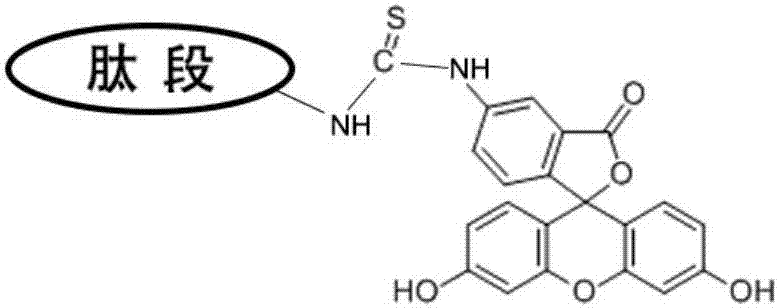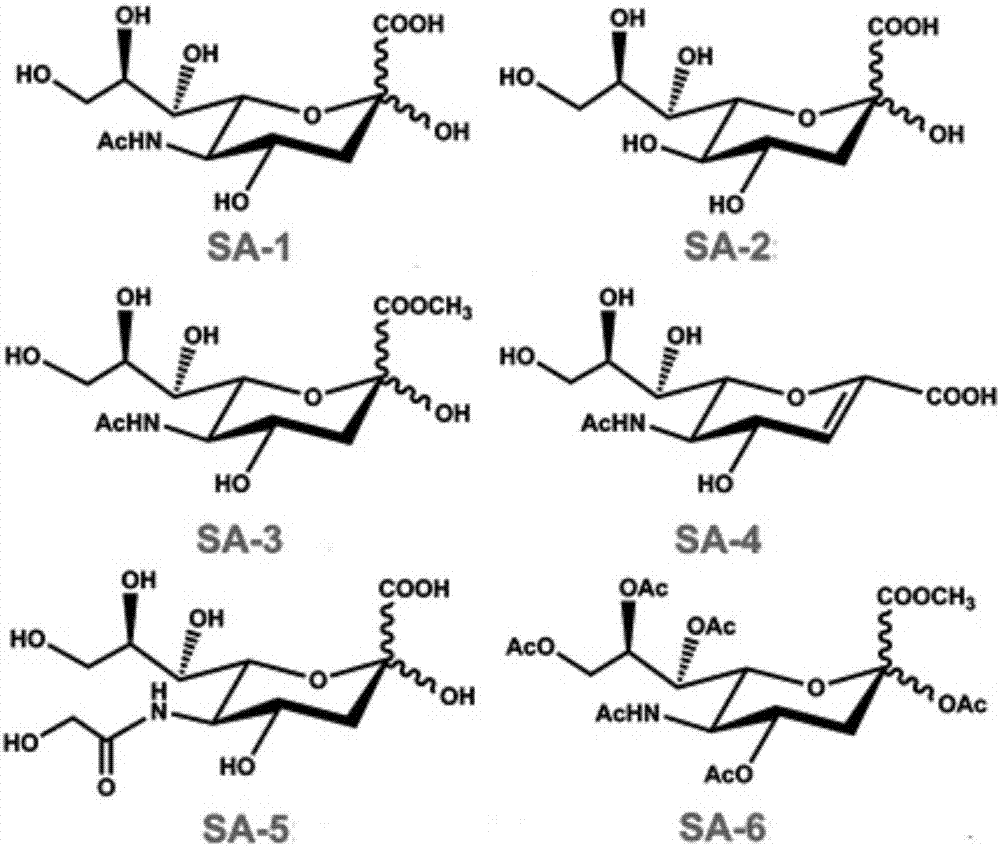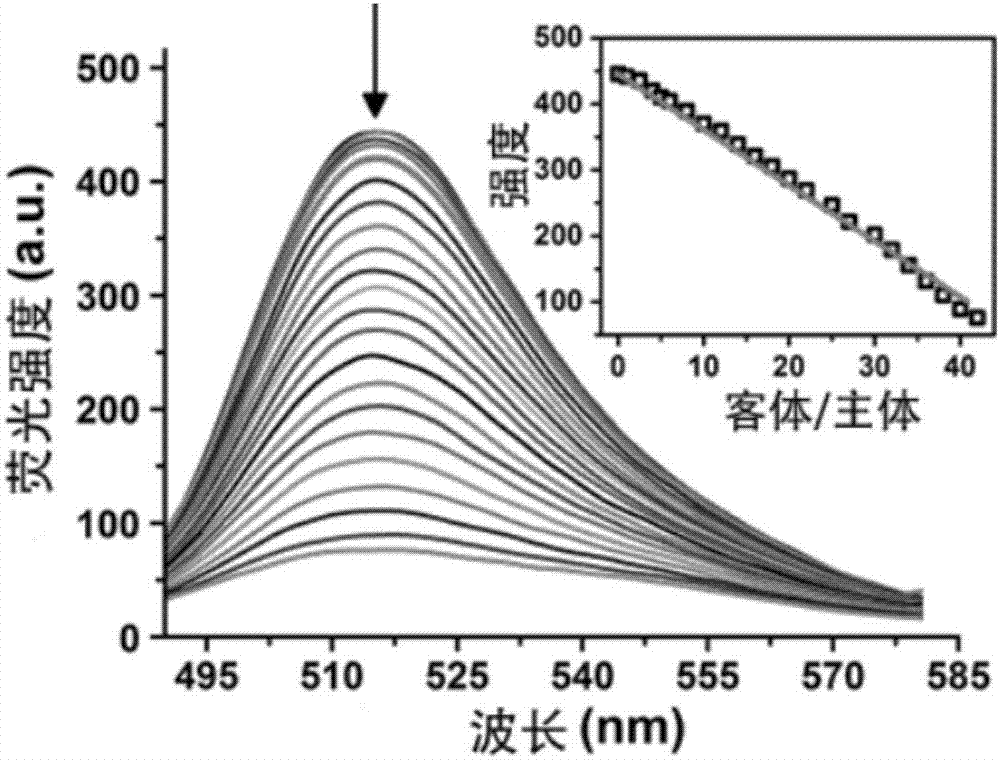Polypeptide fluorescent probe and preparation method and applications thereof
A fluorescent probe and polypeptide technology, applied in the field of biochemistry, can solve problems such as unsatisfactory accuracy and effective detection of a single sialic acid, achieving fast detection speed, simplified peptide chain structure, and good scalability Effect
- Summary
- Abstract
- Description
- Claims
- Application Information
AI Technical Summary
Problems solved by technology
Method used
Image
Examples
Embodiment 1
[0048] Preparation method of polypeptide fluorescent probe modified by fluorescein isothiocyanate
[0049] Add fluorescein isothiocyanate to the round bottom flask, then dissolve it with 25mL methanol or water, then add the polypeptide DAPD, PD, DP, DA, DD, PA or AD to ensure the molar ratio of fluorescein isothiocyanate to polypeptide is 1.2:1. After stirring for 12 h at a constant temperature of 30° C., the solvent was removed by rotary evaporation to obtain a crude product. The crude product is separated and purified by high-performance liquid chromatography, and the desired pure product is obtained after vacuum freeze-drying, which can be used as a fluorescent probe for specific recognition of sialic acid. It can be understood that the dipeptide in the present invention is not limited to PD, DP, DA, DD, PA or AD, and it can be a dipeptide formed by any two amino acids of D, A, and P.
Embodiment 2
[0051] The fluorescent probe based on tetrapeptide DAPD is applied in the specific recognition of sialic acid, and the specific steps are as follows:
[0052] 1) First prepare a DAPD fluorescent probe aqueous solution with a concentration of 2.0 μM (add Tris-HCl buffer, adjust pH=7.4), use it as the fluorescent host molecule, measure its emitted fluorescence spectrum at an excitation wavelength of 470 nm, and record its emission at The highest peak intensity I at 514nm 0 ;
[0053] 2) Add sialic acid (SA-1) of the DAPD fluorescent probe to the solution as a guest molecule, wherein the molar amount of SA-1 added is 0.1-5 times that of the DAPD fluorescent probe, and mix evenly, at an excitation wavelength of 470nm Measure its emission fluorescence spectrum under the condition, record its highest peak intensity I at 514nm 1 ;
[0054] 3) Continue to add SA-1 to the solution obtained in step 2) and mix evenly, measure the fluorescence spectrum it emits under the condition of e...
Embodiment 3-4
[0058] As described in Example 2, the guest molecule sialic acid (SA-1) in step 2) was replaced with glucose and galactose respectively, and the DAPD fluorescent probe was measured to add different molar ratios of glucose or galactose under the same conditions. Fluorescence spectrum of lactose. The change trend of the obtained fluorescence spectrum is as follows Figure 4 and Figure 5 shown.
PUM
 Login to View More
Login to View More Abstract
Description
Claims
Application Information
 Login to View More
Login to View More - R&D
- Intellectual Property
- Life Sciences
- Materials
- Tech Scout
- Unparalleled Data Quality
- Higher Quality Content
- 60% Fewer Hallucinations
Browse by: Latest US Patents, China's latest patents, Technical Efficacy Thesaurus, Application Domain, Technology Topic, Popular Technical Reports.
© 2025 PatSnap. All rights reserved.Legal|Privacy policy|Modern Slavery Act Transparency Statement|Sitemap|About US| Contact US: help@patsnap.com



